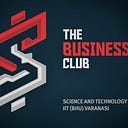Norway's Way of Handling a Lottery
What brings us here :
- Norway is Apple’s 8th biggest shareholder with over $9 billion invested in it.
- Holds around 1.5% of all stocks existing in the world investing in about 9000 companies.
- In 2018 Facebook started a new algorithm to filter fake news along with taking the wage gap seriously. These two decisions are an outcome of Norway adding these topics in the shareholder meetings.
Understanding Norway
Norway is a Scandinavian country with a population of just about 5.5million with a GDP per capita more than $80000. Life expectancy is one of the highest in the world. Ranking 3rd in the world happiness index. One of the best education systems in the world with university graduation rates around 35%.
What makes this country more interesting is its distribution of wealth. After taxes, the income of the top 20% of earners is just 4 times what the bottom 20 % earn. Which should be more than 10 times according to the OECD average. One in every 287 people is a millionaire in Norway.
How did Norway reach here?
The Turnaround
Norway has not always been this rich in the past. The Norwegian economy focused mainly on fishery (thanks to its 2nd largest coastline in the world), agriculture, and timber. Norway is the second-largest seafood exporter in the world. But the turnaround began to come in the early 1960s.
In May 1963 the Norwegian government asserted sovereign rights over the natural resources of the north sea and in 1969 large reserves of oil were found in the region large enough to produce 1.5 million barrels of oil a day. This oil boom was so big that it increased Norway’s GDP fivefold by 10 years from $12 Billion in 1970 to $65 Billion in 1980.
So is the story of Norway similar to those of other oil-rich countries like the UAE or Saudi Arabia?
No, not exactly. But the way the Norwegian government used this fortune surely is !!
What difference did Norway create?
The Norwegian government played it reasonably smart. They realized two things
- The inflow of profits won’t last forever and oil will eventually dry out.
- The profits they make will depend largely on crude oil prices in the international markets which they have no control on.
The task of oil wealth generation was done mainly by a newly formed public company Statoil. The reason for this monopoly was the huge taxes imposed on foreign companies (around 78%). This made the Norwegian government very rich.
Instead of enjoying this turnaround and increasing the government spending or reducing taxes, the Norwegian government was very prudent of the revenue generated from this precious yet finite well of fortune. They saved the profits as what they call the Sovereign wealth fund. Which is the world’s largest sovereign fund.
Though the fund is often referred to as people’s fund it is not directly accessible by the people or the government itself only the returns gained on the fund’s investment are used to fund public welfare schemes and subsidize health and education. The fund invests in a diversified portfolio of stock, bonds, cash, and commodities.
The fund only invests in foreign companies, securities, and commodities making the fund’s performance independent of the performance of the Norwegian economy.
The fund as a political and social weapon
The thing more important than where the fund invests is where it does not. Every year the Norwegian central bank pushes a blacklist of companies that the fund won’t invest in for ethical reasons. Weapon manufacturers, tobacco companies, firms involved in corruption scandals, fossil energy companies, companies responsible for environmental damage consist of the list.
In 2013 the fund voted in around 6000 general meetings and forwarded around 239 shareholder proposals on social and environmental issues. In 2018 Facebook started a new algorithm to filter fake news along with taking the wage gap seriously. These two decisions are an outcome of Norway adding these topics in the shareholder meetings.
The fund is now worth three times Norway’s annual gross domestic product, and its returns provide vital funding for the country’s extensive welfare system.
Conclusion
Norway’s way of handling the oil wealth can be treated as an Ideal way to avoid, as they call it, “The Dutch Disease”. It’s also a classic example of how diversifying can decrease market risks.
In spite of heavy taxation and comparatively higher cost of living the people of Norway continue to feel prosperous due to the well-knitted social safety net that provides highly subsidized education and healthcare and the fund is supposed to play an important role in the same

